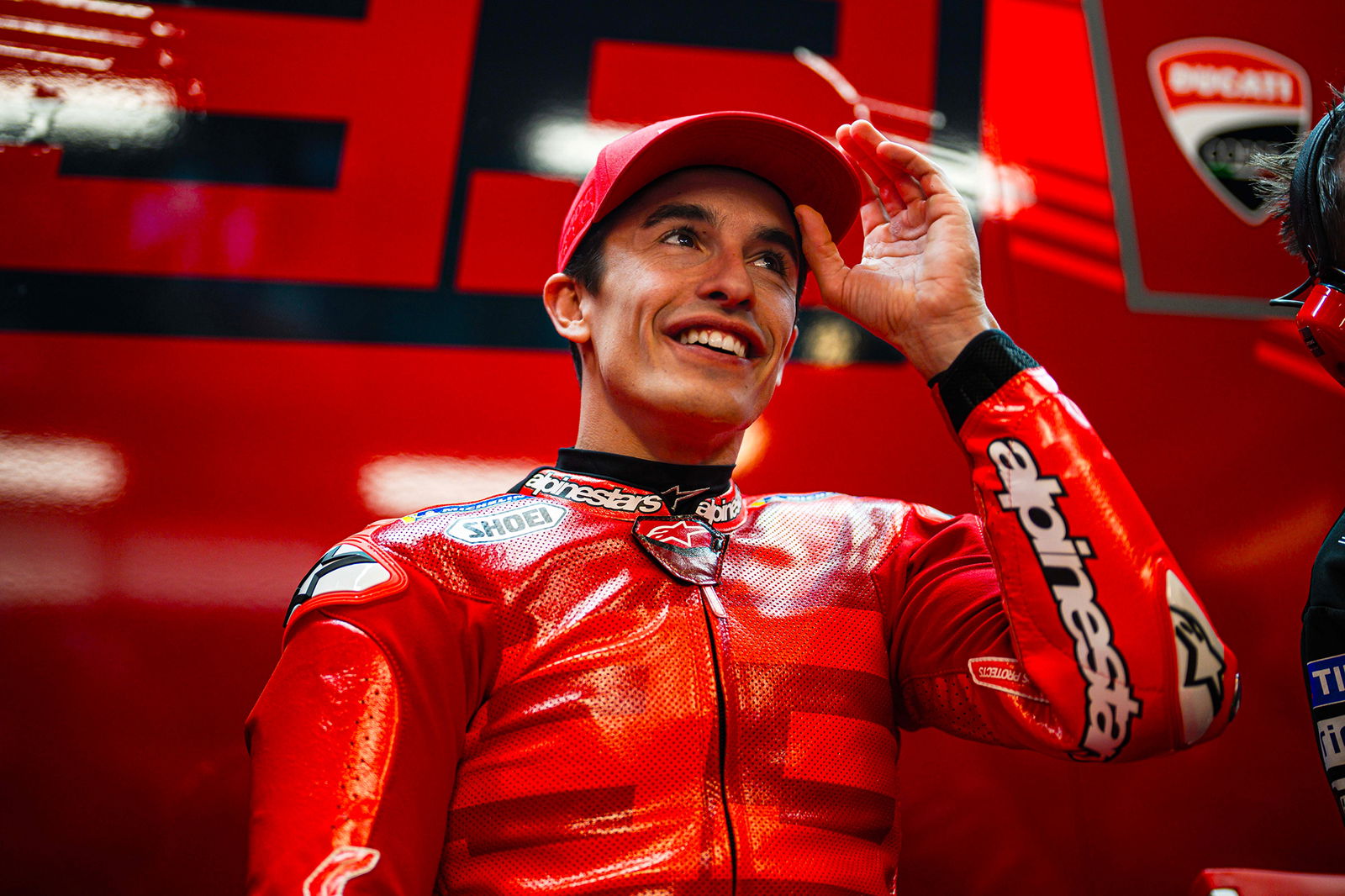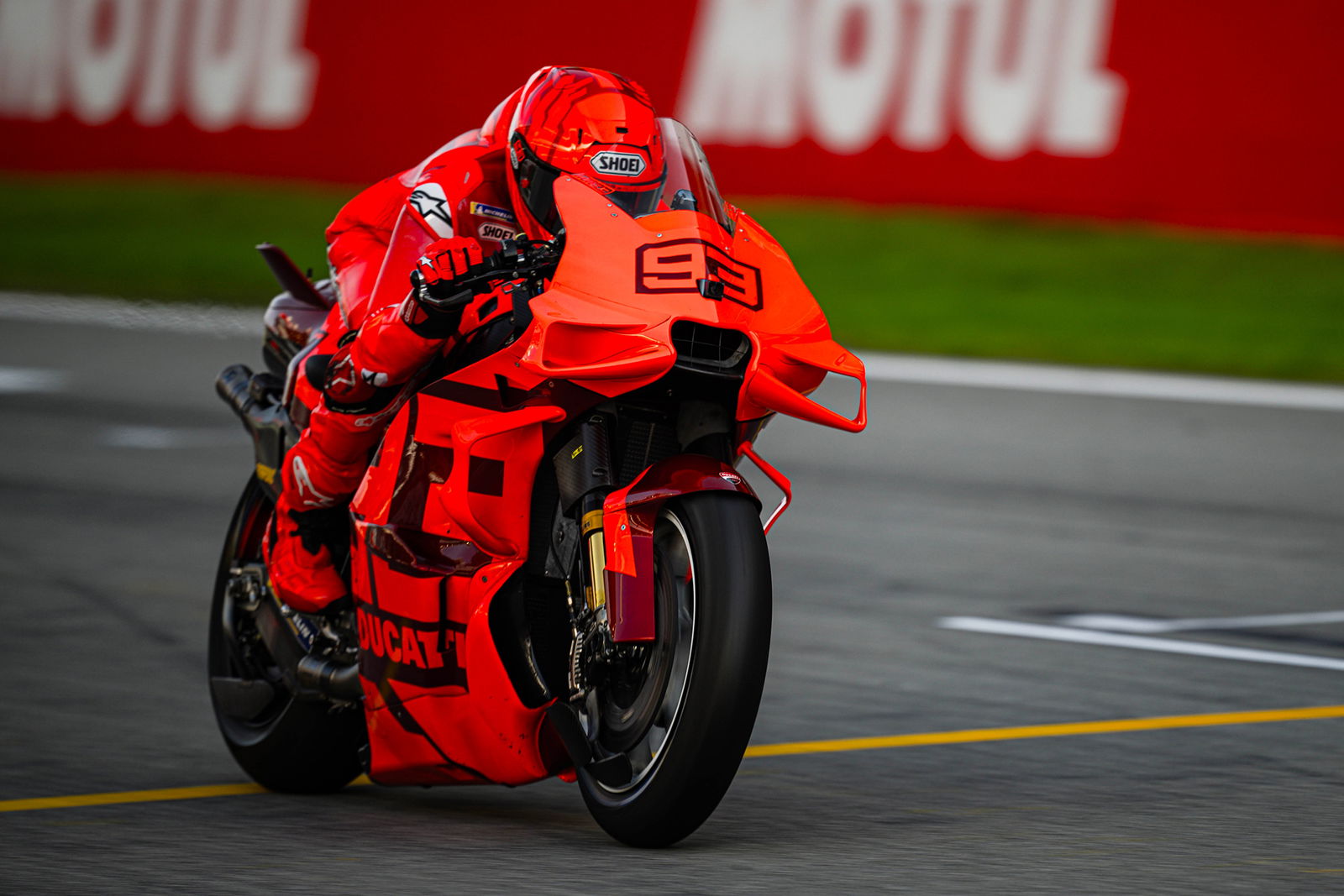

MotoGP will reduce engine capacity from 1000cc to 850cc and ride height devices will be banned.
Another change is the reduction of aerodynamic devices, such as front wings.
The Spaniard is optimistic the changes will have a positive impact on the championship.
He anticipates there’ll be more overtaking as a result of the wing ban.
“There will be the regulation change in 2027, with less aerodynamics, slightly lower engine displacement,” Marquez explained.
“But I think the bikes will still run the same, because, I don’t know how the factories do it, but in the end, they always make them fast again.
“However, the fact of using less aerodynamics I think it’s good, especially because I think that will lead to more overtaking and the rider can make a little more of a difference.
“The issue of the height devices also changes. I think that the less technical devices a bike has, the more difference the rider can make, and the more technical factors you have, the more it will make you depend on the mechanics.”
As a result of the impending regulation changes, engines have been frozen for the 2026 season.
“This pre-season, above all, is very important because in 2025 and 2026 the engines will be the same,” Marquez explained.
“If you make a mistake in the engine design for 2025, you will also carry over the problems in 2026. So it is very important.”

2027 MotoGP technical regulation changes (per FIM)
Engines
MotoGP class engine displacement will reduce from 1000cc to 850cc. The maximum cylinder bore will reduce from 81mm to 75mm. Engines will remain 4-stroke only, with 4 cylinders.
Concessions
Manufacturers who have raced in 2026 will start the 2027 season in Rank B. Rankings will be revised at the mid-season checkpoint in 2027, based on the first part of the 2027 season results only – 2026 results, before the regulation changes, won’t be counted. The regular ranking system will resume at the end-season checkpoint at the end of 2027.
Any manufacturers who have not raced in 2026 will start 2027 season in Rank D. Their rankings will also be revised at the mid-season checkpoint in 2027, based on the first half of the 2027 season.
Engine durability
The number of engines available for use by each permanent contracted rider will reduce to 6 engines per season (up to 20 races), or 7 engines per season in the case of 21 or 22 races on the calendar.
Manufacturers in Concessions Rank D will continue to be able to use two additional engines per rider per season.
GPS
GPS data from all riders will be made available to all teams at the end of each session.
Transmission
In the MotoGP class the total number of gearbox ratios (pairs of gears) permitted will reduce to 16, plus 4 different overall ratios for the primary drive, for each season
Minimum weight
The minimum bike weight in the MotoGP™ class will be 153kg.
Suspensions and dampers
No ride height devices of any kind will be permitted, including “holeshot” devices activated solely for race starts.
Fuel Tanks
Fuel tank capacity will be reduced to 20 litres for Grand Prix races and a maximum of 11 litres will be permitted for the Sprint.
Reduction of aero surfaces
The maximum permitted width of the high portion of the front fairing Aero Body will reduce from 600mm to 550mm, the maximum rear end height will reduce from 1250mm to 1150mm, the foremost point of the front fairing (nose) will be moved back by 50mm, and the rearward taper of the front fairing aero appendices will also narrow.
Homologation of aero surfaces
The rear end of the machine – any aerodynamics behind the rider – must be homologated as part of the Aero Body. Manufacturers will be permitted to make one update per season.
Fuel and Oil
The use of 100% non oil-refinement origin fuel is confirmed from 2027.
The FIM, together with MSMA and the MotoGP fuel suppliers, will clarify all technical details via the TWG1 working group, including representatives from Dorna and IRTA, beginning in May 2024.





















Discussion about this post